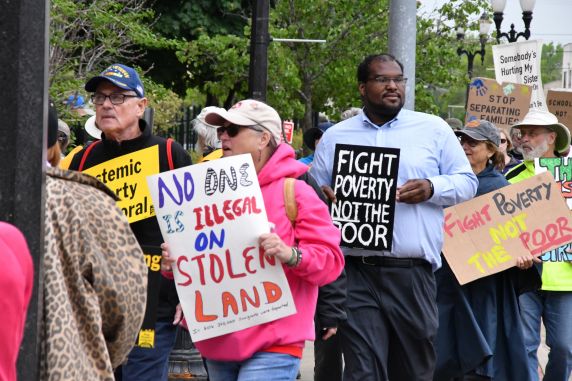(38422) Michigan Poor People's Campaign, Demonstrations, 2018
Posted May 23rd, 2018 by eclemens
Supporters of Michigan’s “Poor People’s Campaign” carry signs in downtown Lansing.
The events, modeled after the Poor People’s Campaign of 1968, called for racial, economic, environmental and immigration justice. Michigan was one of 30 states participating in the six-week long project.

Date:
2018-05-20Physdesc:
PhotographPhotographer:
Dale Rich- Login to post comments
- Thumbnail
- Printer-friendly version

 Reddit
Reddit Facebook
Facebook LinkedIn
LinkedIn